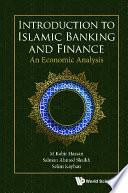
Ensiklopedia Tasawuf Imam Al-Ghazali
Tasawuf adalah ajaran suci yang dapat melindungi hati dari godaan-godaan duniawi yang sementara. Secara periodik dan konsisten ia mengajarkan bagaimana meraih suasana hidup yang lebih tenteram, memperbaiki kesalahan-kesalahan batin, dan menyirnakan egoisme berlebihan. Secara praktis, tasawuf akan menempa diri menjadi lebih bertanggung jawab atas perilaku sehari-hari dan menunjukkan bagaimana berlaku santun dan kasih pada orang lain. Berpijak pada konsep Imam Al-Ghazali, buku ini akan menuntun Anda menemukan pemahaman yang luas. Buku ini disajikan secara khusus dan istimewa. Lebih praktis karena disusun secara alfabetis, lebih kompreheensif karena memaparkan konsep-konsep tasawuf secara menyeluruh, dan lebih mudah dipahami karena disampaikan dengan gaya tutur yang populer. [Mizan, Hikmah, Agama, Indonesia]
- ISBN 13 : 9789793714479
- ISBN 10 : 9793714476
- Judul : Ensiklopedia Tasawuf Imam Al-Ghazali
- Pengarang : M. Abdul Mujieb, Syafi'ah, H. Ahmad Ismail M., Syafi'ah, H. Ahmad Ismail M., Syafi'ah, H. Ahmad Ismail M.,
- Kategori : Ghazzali; 1058-1111
- Penerbit : Hikmah
- Bahasa : id
- Tahun : 2009
- Halaman : 656
- Google Book : http://books.google.co.id/books?id=jYeK_YpdUloC&dq=intitle:TASAWUF&hl=&source=gbs_api
-
Ketersediaan :
Tasawuf adalah ajaran suci yang dapat melindungi hati dari godaan-godaan duniawi yang sementara.








